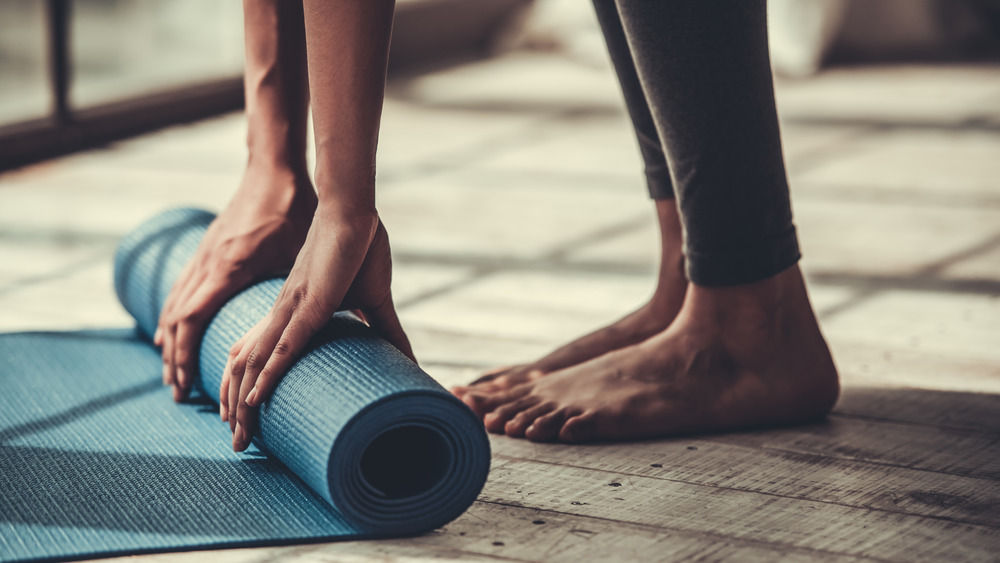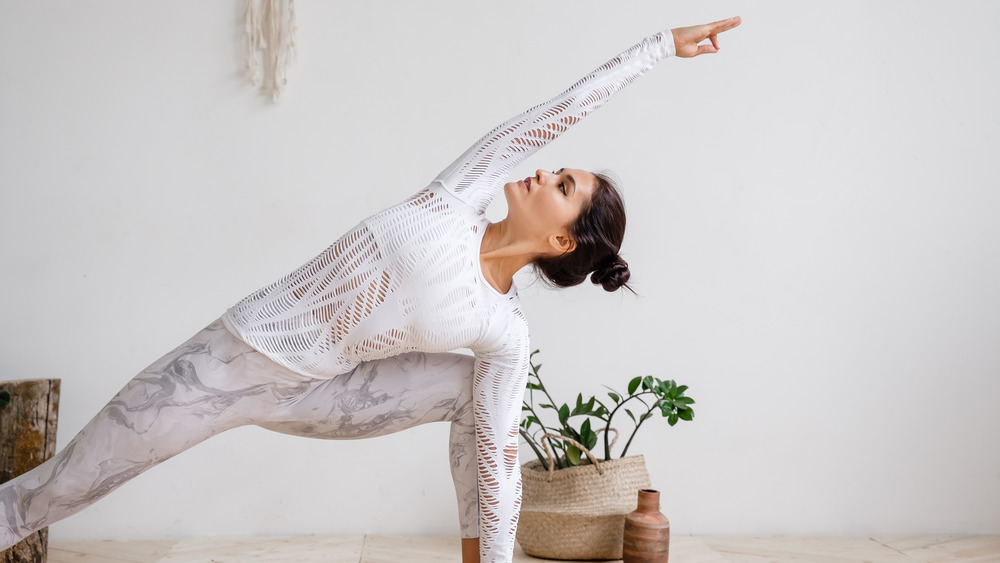What You Should Know Before Trying Power Yoga
Yoga is not one-size-fits all. There are many different styles to choose from depending on your goals and what you hope to get out of each class. Each variety of the mind-body practice has its own discipline and focus (via Healthline). Power yoga, for instance, is designed to improve muscle strength and stamina. While not an official type of yoga, it is an offshoot of Ashtanga yoga, a practice that began in the early 20th century. However, in practice, power yoga resembles a more vigorous style of Vinyasa and the two terms are often used interchangeably (via Yoga Journal).
Power yoga focuses on the continuous flow from one asana, or posture, to the next. This is very different from Hatha yoga, the most popular style of yoga in the United States, which approaches each pose separately and focuses on posture and deep breathing. Power yoga classes move quickly and are meant to get your heart rate pumping. It is an intense form of physical activity and may feel more like an aerobics class than a relaxing, meditative practice. Power yoga uses many of the same postures as Ashtanga yoga, though not in the same order. Each class is a sequence of poses set by the instructor, so it is different nearly every time.
Is power yoga right for you?
Because of the fast pace and challenging postures, power yoga classes are best for those that are already physically active. It is an intense form of physical activity that can help you build muscle strength, lose weight, improve flexibility, reduce stress, and help protect your heart. Classes typically run 60 to 90 minutes.
Despite all the benefits, it may be hard to jump right in, especially if you don't have a basic understanding of Vinyasa poses or you are not used to working out at a level where your heart rate is consistently elevated for at least an hour. If you're interested in a power yoga class, look at the class descriptions at your local gym or yoga studio. Many fitness centers are offering virtual classes during COVID-19. Some classes may not be listed as "power yoga" but rather Vinyasa. If you're just starting out, consider taking beginner classes.
Before signing up, speak to the instructor about what the class entails and what level of fitness is needed. If you're new to yoga in general, you might want to try Hatha yoga to help familiarize yourself with yoga postures and how to do them correctly so that you can move on to other styles.


